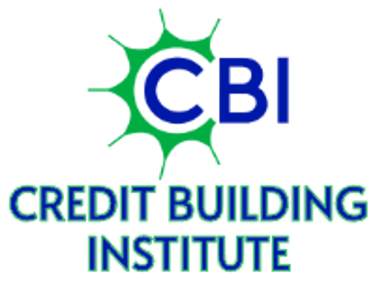Rebuild and Rise: Credit is a Survivor’s Best Asset
CREDIT BUILDINGFINANCIAL EDUCATIONPERSONAL CREDITCREDIT ASSISTANCE
CBI Contributor
11/1/20255 min read


A New Chapter Begins with Financial Freedom
Abusers often use money to control, leaving survivors with damaged credit, coerced debt, or no financial history at all. This kind of financial harm can make rebuilding a new life seem impossible. But there’s a powerful truth many don’t hear often enough: credit can be your strongest tool for reclaiming your independence.
Rebuilding credit isn’t just about raising a number on a report. It’s about reclaiming your power, creating stability, and opening doors that were once shut.
“Rebuilding your credit is rebuilding your confidence.”
The Hidden Weapon: How Abusers Use Finances to Control
Financial abuse is one of the most common, yet least talked about, forms of domestic violence. According to the National Network to End Domestic Violence, an estimated 99% of survivors experience some form of financial control. This can include anything from taking over bank accounts to ruining a partner’s credit.
Many abusers:
Restrict access to money and financial information.
Open credit cards or loans in their partner’s name without permission.
Rack up unpaid debt, damaging their partner’s credit.
Sabotage employment opportunities to keep survivors financially dependent.
This isn’t simply about dollars and cents; it’s about power. By destroying credit or cutting off access to money, abusers make it harder for survivors to leave or start fresh. That’s why credit rebuilding isn’t just financial recovery—it’s a critical part of healing.
“Financial control is a form of power. Reclaiming credit is reclaiming that power.”
Why Credit Matters When Rebuilding Independence
Credit is woven into nearly every part of daily life in the U.S. It can determine whether a survivor can rent an apartment, qualify for a car loan, open a bank account, or get a job. A strong credit history isn’t just a financial asset; it’s a key to stability and autonomy.
Good credit can:
Make it easier to secure safe housing without needing a cosigner.
Help qualify for affordable transportation and lower insurance rates.
Improve employment opportunities in industries that use credit checks.
Provide access to fair credit products, building future wealth and security.
For survivors who have been told they have no control, rebuilding credit can be a powerful way to prove otherwise.
Rebuild and Rise: Credit is a Survivor’s Best Asset
Leaving an abusive relationship takes extraordinary courage. It’s a decision rooted in self-worth and the hope of a better future. Yet for many survivors, freedom comes with an overwhelming reality: financial instability. As we close out Domestic Violence Awareness Month, we champion those survivors to rebuild and rise.
A Gentle Roadmap for Rebuilding Credit
In Credit recovery after abuse can feel intimidating. But it’s not about doing everything at once. It’s about taking one careful, safe step at a time. This journey is yours, and you set the pace.
Step 1: Safely Review Your Credit
The first step toward regaining control is knowing where you stand. You can check your credit report for free at AnnualCreditReport.com. Review your reports from Equifax, Experian, and TransUnion. Do this with a secure device and, if possible, a private location.
Look for accounts you don’t recognize, suspicious activity, or debts created without your consent. It may be emotional to see the impact of financial abuse on paper. Take breaks if needed, and remind yourself: this report doesn’t define you.
Step 2: Address Coerced or Fraudulent Debt
If there are accounts that were opened under duress or fraud, you have the right to dispute them. This can involve contacting credit bureaus, filing identity theft or police reports, or seeking legal support through domestic violence organizations. Some creditors have special procedures for survivors, including “domestic violence flags,” which can help resolve disputes more sensitively and quickly.
Step 3: Build Financial Safety and Independence
A new, secure bank account can be an important milestone. Choose a financial institution your abuser cannot access. Opt for strong passwords and, when possible, two-factor authentication. Some survivors use a trusted friend’s mailing address or digital statements to protect their location and privacy.
Step 4: Rebuild Credit with Intentional Tools
Credit rebuilding doesn’t have to involve risky products. Secured credit cards, where you deposit your own money to create a credit line, can help you establish or rebuild a positive payment history. Some nonprofits offer credit-builder loans, small installment loans designed to help rebuild credit.
If it’s safe, becoming an authorized user on a trusted person’s account can also help build history. Rent reporting programs, which record on-time rent payments to credit bureaus, are another option for building credit without taking on traditional debt.
Step 5: Seek Support from People Who Understand
You don’t have to do this alone. Survivor-centered financial counseling can provide both technical help and emotional support. Nonprofits, legal aid clinics, and credit counseling organizations often offer free or low-cost services. A trauma-informed advocate understands that rebuilding finances after abuse isn’t just practical but deeply personal.
Real Story, Real Strength: “Dianne’s Journey”
When Dianne left her marriage, she carried years of financial abuse with her. Her credit score was below 500, her name was tied to debt she didn’t create, and her confidence was at an all-time low.
But Dianne began with one small step: pulling her credit reports. With the help of an advocate, she disputed fraudulent accounts and slowly built new credit through a secured card and rent reporting. Over time, she watched her score rise, her financial options expand, and her sense of self return.
Eighteen months later, Dianne signed a lease for her own apartment and bought a reliable used car. She describes each payment she made as “a small act of taking my power back.”
“Every on-time payment reminded me that my future belonged to me, not to my past.”
Healing at Your Own Pace
Financial trauma is real. Credit rebuilding may bring up feelings of fear, shame, or overwhelm. But you don’t need to “fix everything” overnight. You deserve to move at a pace that honors both your safety and your healing.
Set small, achievable goals, like reviewing one section of your credit report at a time or opening one safe account. Create a sense of emotional safety by completing financial tasks in spaces where you feel supported. Most of all, permit yourself to feel proud of every single step.
“Your past credit history does not define you—you are defined by the strength it took to start again.”
Trusted Resources for Survivors
You are not alone on this path. These organizations offer confidential support, financial guidance, and credit-building tools tailored to survivors:
National Network to End Domestic Violence — Survivor financial empowerment and local advocacy connections.
Consumer Financial Protection Bureau — Clear guidance on credit reports, disputes, and consumer protections.
National Domestic Violence Hotline or 800-799-7233 — Confidential, 24/7 support.
National Foundation for Credit Counseling — Certified credit counseling for rebuilding plans.
Credit Builders Alliance — Programs designed to help people with limited credit histories.
Your First Step Toward Rebuilding Power
Financial abuse might have taken control, but rebuilding your credit can bring it back. Whether your credit score is low or nonexistent, the way forward is real, possible, and within your reach.
Start with one step—reviewing your credit report, opening a safe account, or reaching out to a counselor. Each action is a quiet but powerful declaration that your future belongs to you.
“Credit is more than numbers. It’s your key to freedom, stability, and self-determination.”
Call to Action: Reclaim Your Financial Future
If you’re ready to take the first step, support is waiting:
Check your credit report at AnnualCreditReport.com
Call The Hotline at 800-799-7233 for confidential help
Connect with a trusted credit counselor or nonprofit advocate
Your credit journey is not about perfection—it’s about power, healing, and possibility.
Rebuild. Rise. Reclaim your future.
GLOSSARY QUICKLINKS
Term 1
Term 2
Term 3
Term 4
Term 5
Credit Building Institute
Together, we can build
creditable relationships and results


Copyright © 2023 Credit Building Institute - All Rights Reserved.
Trusted credit building with 24/7 encrypted data. Build your credit with affordable credit builder plans and reporting to all 3 credit bureaus, helping improve your credit score quickly and safely. 100% money-back guarantee (T&Cs)
